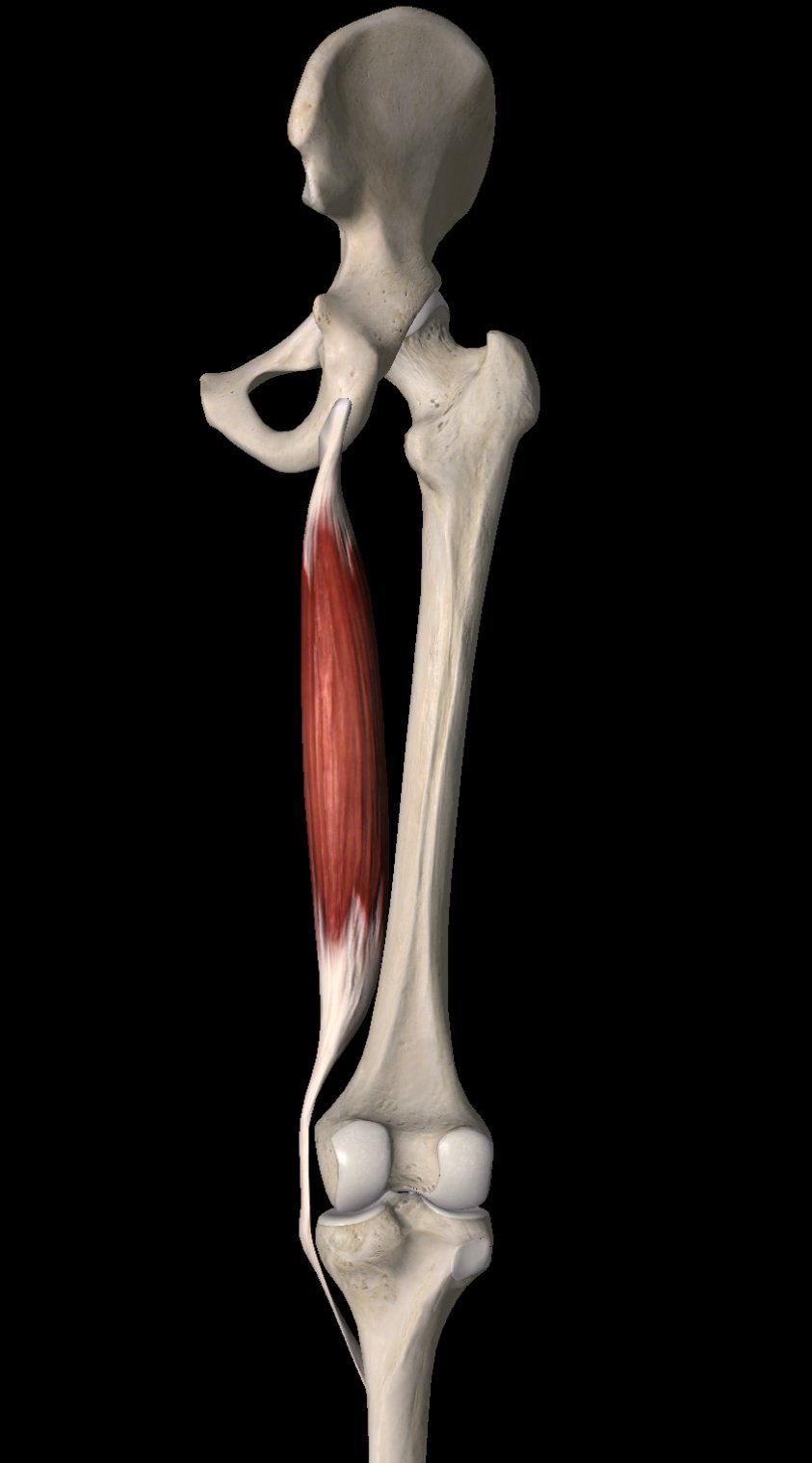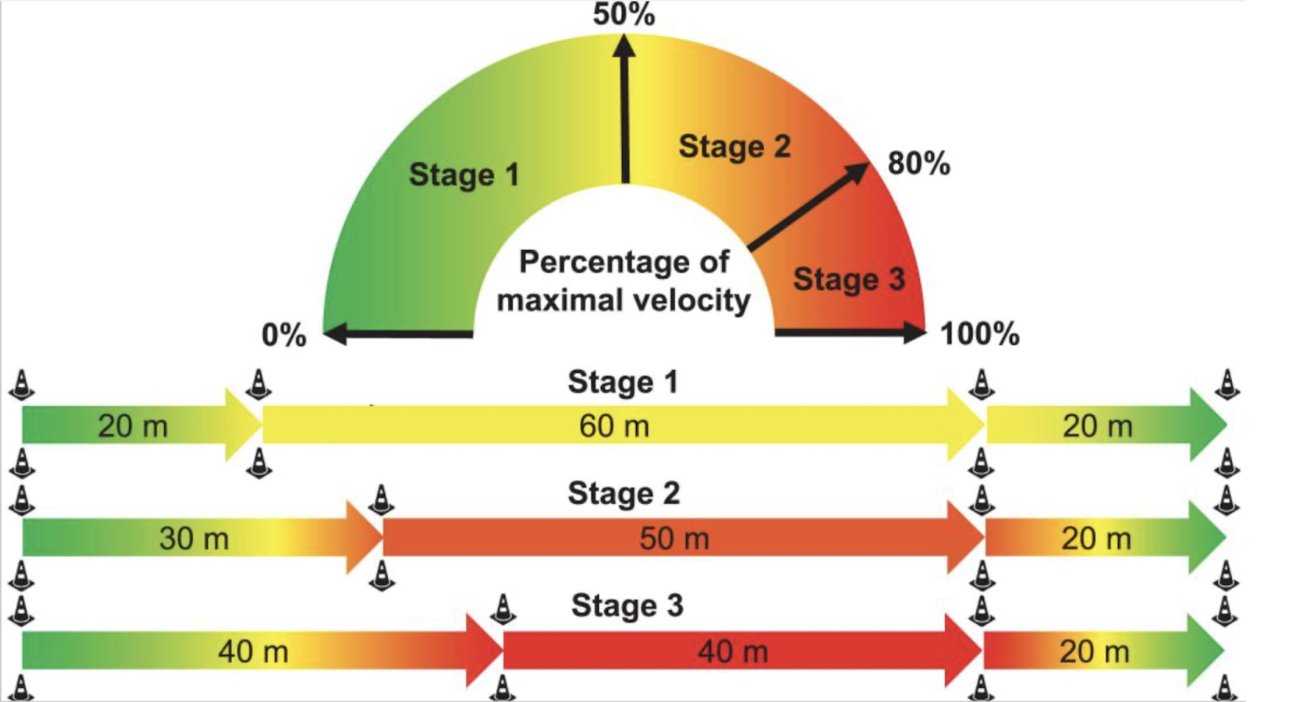Hamstring Strain Physical Therapy
How to Recover from a Hamstring Strain
What is a hamstring strain?
The hamstrings are made up of 3 muscles: the biceps femoris, semitendinosus, and semimembranosus. A hamstring strain is when one of these muscles is partially or fully torn. Hamstring strains can occur in the muscle belly, at the junction where the muscle meets the tendon, or at the tendon where it meets the bone. The most commonly torn hamstring muscle is the biceps femoris.
Semimembranosis
Semitendinosis
Biceps Femoris
Why do hamstring strains happen?
Hamstring Strain Injuries happen when the individual is running at top speeds. Typically, the injury is associated with a sudden increase in acceleration (think about sprinting toward a soccer ball, or trying to reach 1st base before being thrown out).
A hamstring strain occurs during the late stage of the swing phase of running. Your hamstrings need to slow down the rate at which your knee is straightening before you land. When the hamstrings can’t control that, there can be a tear of the hamstrings.
According to the 2022 Hamstring Strain Injury in Athletes Clinical Practice Guidelines, there are some non modifiable risk factors for hamstring strains, including a previous history of hamstring strain and a previous history of knee ligament tears or calf strains.
Modifiable risk factors include poor trunk and pelvic posture / motor control during high-speed running. Interestingly, there is not much research this far that suggests hamstring flexibility is associated with increased risk of hamstring strain injury.
How do I know I strained my hamstring?
You will know that you strained your hamstring if you experience local pain in the posterior thigh during activity. The pain typically remains local, but can radiate down the back of the thigh if the inflammation aggravates the sciatic nerve.
Depending on the grade of the hamstring strain, you may also experience ecchymosis (bruising) that appears after a hamstring strain injury.
There will also be pain when the hamstrings are stretched or when the hamstring are attempting to forcefully contract. Our therapists will help you to determine the grade of your strain, location and next best steps to take.
Should you stretch a strained hamstring?
A common misconception is that you should stretch a hamstring strain. We absolutely advise against stretching in the acute stage of a hamstring strain. Think of it this way - if you had a paper cut, would you constantly be pulling the skin apart to open and gap the papercut? No! You would allow the skin to come together and heal. This is true in the early stages after a hamstring strain injury.
With that being said, it’s important to begin to introduce stretching, to tolerance after the acute stage is over. When we are contemplating return to running and return to sport, we need to see that the athlete has full, pain-free hamstring flexibility.
Heat or Ice for Hamstring Strain?
Neither heat nor ice is going to facilitate true healing after a hamstring strain. However, we do recommend that you use an ice / cold pack for 15-20 minutes at a time in the acute stage after a hamstring strain. This can help to numb the pain and allow the athlete to move more easily. There is debate about whether or not cold therapy actually facilitates decreases in swelling.
Afterwards, we typically recommend a hot pack / heating pad to help modulate symptoms. You can use it for 15-20 minutes at a time. We don’t really want to use ice at that point, as ice can prevent natural blood flow to the area, therefore negatively influencing the healing process.
How long does a strained hamstring take to heal?
According to this study, there are 3 grades of hamstring strains. Hamstring strain injuries are categorized based on an active knee extension (AKE) test that measures the lack of active knee extension range of motion compared to the uninjured side.
A greater active knee extension deficit is a predictor that rehab time for full recovery and return to sport will take longer.
Grade I
15° active knee extension deficit
Required 25.9 days (3-4 weeks) of rehab
Grade II
16° to 25° active knee extension deficit
Required 30.7 days (slightly over 1 month) of rehab
Grade III
26° to 35° active knee extension deficit
Required 75.0 days (2 months) of rehab
According to this study, the closer the hamstring strain injury is to the ischial tuberosity, the longer the recovery period.
According to this study, return to competition took longer when the hamstring strain injury length and/or cross-sectional area was greater.
Involvement of the proximal hamstring tendon appears to be most closely associated with increased time to return to sport, based on this study - this is likely due to the important role the tendon plays in transferring forces from the hamstring muscle to the pelvis.
How does a physical therapist treat a hamstring strain?
Grade I and II hamstring strains are treated conservatively with rehab. Generally, a physical therapist should address any modifiable risk factors such as:
Hamstring weakness and fatigue
Imbalances in hamstring eccentric and quadriceps concentric strength
Decreased quadriceps flexibility
Decreased hip flexor flexibility
Strength and coordination deficits of muscles surrounding the pelvis and trunk
Rehab for hamstring strain injuries are separated into 3 phases.
Phase 1
Minimize pain and edema, while protecting the scar formation, especially during the immediate days post injury (1-5 days)
Low-intensity, pain-free, range of motion (limited) exercises to minimize atrophy and develop neuromuscular control within a protected range of motion
Normalizing gait when pain allows
Phase 2
Increase intensity and range of motion of the exercises as tolerated
Initiate eccentric hamstring exercises (strengthening the hamstring while it is lengthening)
Trunk stabilization exercises
Progress toward jogging and then running (up to 50% maximum speed)
Phase 3
Incorporate functional movement patterns
Initiate more aggressive, sport-specific movements (quick direction changes and technique training) through full range of motion to prepare the athlete for return-to-sport
Progress eccentric hamstring exercises toward end range of motion as tolerated
Progress difficulty of trunk stabilization exercises as appropriate
Progress toward maximal sprinting
Hamstring Strain Exercises
There are many exercises that we utilize when rehabbing hamstring strain injuries. Below are a few examples of hamstring specific exercises that we use after a hamstring strain. They are broken up by which phase the athlete is in. It is important to note that we also incorporate exercises that work on trunk/pelvic stabilization exercises throughout each phase of hamstring strain rehab.
Phase 1:
Hamstring Set
Phase 2:
Eccentric Hamstring Curl with Physioball Rollout
Eccentric Hamstring Bridge
Phase 3
Single Leg RDL
Hamstring Extension Tantrums
Hamstring Flexion Tantrums
Hamstring Strain Exercises to Avoid
Avoid aggressive stretching of the hamstrings, especially in the early phase of rehab..
Avoid end range lengthening of the hamstrings (such as an RDL) or substantial eccentric work (running at > 50% maximum speed) while hamstring weakness is present.
Avoid full intensity of functional and sport-specific training if pain/tightness/stiffness is present.
Avoid sprinting and explosive acceleration movements until the athlete has met return-to-sport criteria.
Stretches for Hamstring Strain
As mentioned earlier, you will want to avoid aggressive hamstring stretching, especially in the early phase of rehab. However, you still need to stretch the hamstrings (to tolerance) to make sure hamstring length isn’t the reason your knee can’t straighten all the way. We like to include both static and dynamic hamstring stretches in our treatment plan. A dynamic variation can be helpful because sometimes the sciatic nerve loses its mobility after a hamstring strain (due to swelling and scarring). A dynamic hamstring stretch simultaneously lengthens and shortens the sciatic nerve. This is very conducive to nerve health (this is referred to as nerve “gliding” or nerve “flossing”).
Static and Dynamic Hamstring Stretching
How to Prevent a Hamstring Strain Using Nordic Hamstring Curls
According to this systematic review, including the Nordic Hamstring Exercise (NHE) in an injury prevention program decreases the risk of a hamstring strain injury in athletes by 51%. The dosage for this exercise is not clearly determined in the literature. It appears as though 2-3 sets of 6-8 reps performed 2-3 times per week is the most commonly cited weekly dosage for the Nordic Hamstring Exercise. It is also unclear how this exercise prevents hamstring injuries in athletes. It is speculated that the NHE facilitates eccentric strength and better hamstring fascicle length, which would theoretically make the tissue more resistant to injury.
Nordic Curls
Running with Hamstring Strain
Running with a hamstring strain is not viable in the early stages of rehab, due to the risk of re-injury. However, running is a very important component of returning to sport. Hamstring strain injuries often occur during high speed running and acceleration, so working on progressively faster running is crucial.
Normalizing walking mechanics is our first focus. After that, we can introduce jogging (which is considered 25% of max velocity / effort) as long as the athlete can walk with minimal to no pain. This is considered “Stage 1.”
When the athlete can jog with minimal to no pain, moderate-speed running (considered 50% of max velocity / effort) can be introduced, as tolerated. This is considered “Stage 2.”
When moderate-speed running is tolerated, athletes can gradually progress through stage 2 but should only advance to stage 3 when high-speed running (approximately 80% of maximal velocity) can be performed without pain to minimize the risk of hamstring strain injury. During stage 3, progression toward maximal sprinting (100% of maximal velocity) should occur in relatively small increments (approximately 5% at a time). This is because the eccentric demand on the hamstring goes way up when running at top speeds. We know that a lack of eccentric control is how the athlete gets hurt in the first place, so we don’t want them to experience re-injury here.
Below is an example of the 3 stages, as described in detail by Hickey et. al. in this research study.
Return to Sport After a Hamstring Strain
For return to sport clearance after a hamstring strain injury, clinical examination of the injured leg should reveal:
No pain on palpation of the injured muscle
Passive flexibility tests: <10% deficit compared to uninjured leg without pain provocation
Strength testing:
No difference in manual muscle testing between legs without pain provocation
Isokinetic strength testing: ≤5% deficit compared to uninjured side (if the rehab clinic has the equipment)
Hamstring-to-quadricep strength ratio ≤5% deficit compared to uninjured side (we use force transducer technology to measure this)
Negative active hamstring test (H-test): performing a straight leg raise as fast as possible to the highest point without fear of injury
Functional testing:
Performance on single leg hamstring bridge)
≥30 repetitions is considered good
Sport-specific movement testing with intensity and speed near maximum
Movements are specific to each athlete
May include accelerations, decelerations, rotations, sprinting, cutting, pivoting, jumping, and hopping
All tasks should be completed without pain, limitation, or hesitation
Closing Remarks
If you are an athlete returning to your sport after a hamstring strain injury, we can help. If you would like to work with us, contact us below to speak with a physical therapist.
Disclaimer: This is not intended to be formal medical advice. Your individual needs should be met by the appropriate health care practitioners. Please consult with a trusted provider.
Dr. Paul Nasri PT, DPT, OCS, COMT
Dr. Vincent Liu PT, DPT
Doctor of Physical Therapy
The Game Plan Physical Therapy




